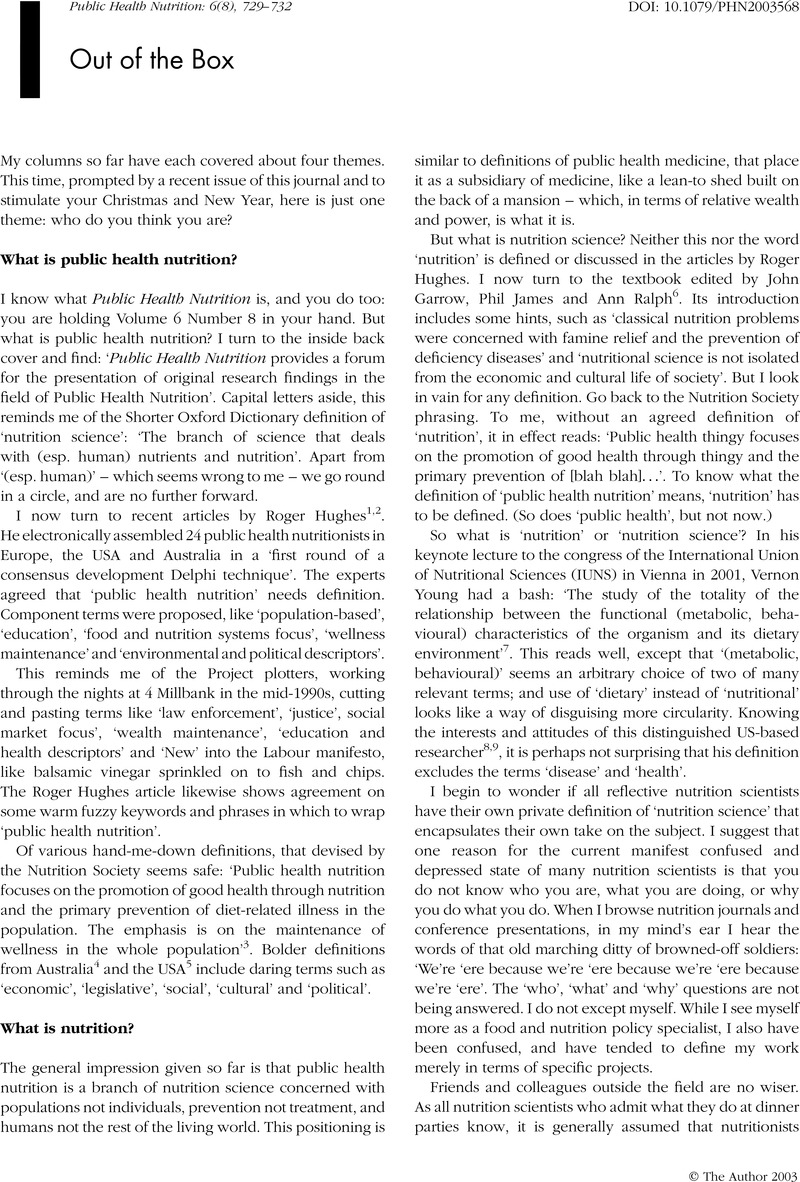Crossref Citations
This article has been cited by the following publications. This list is generated based on data provided by Crossref.
Cannon, Geoffrey
2003.
Out of the Box.
Public Health Nutrition,
Vol. 6,
Issue. 5,
p.
427.



